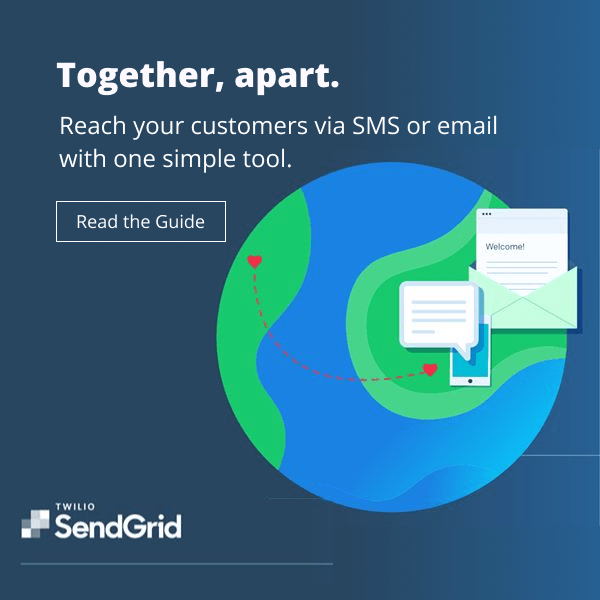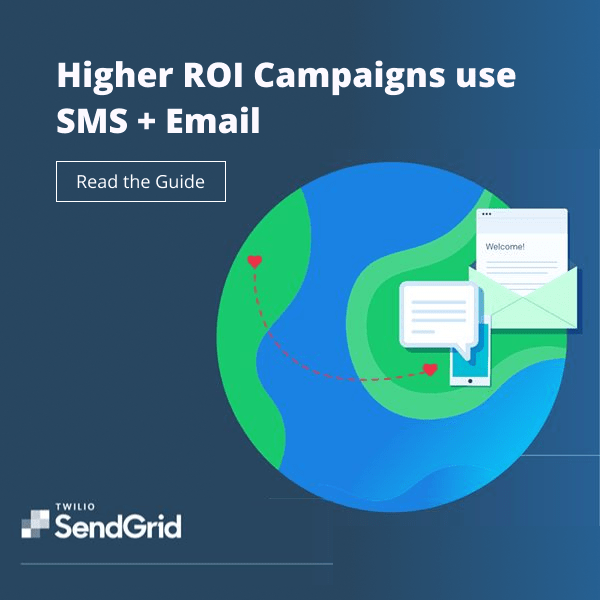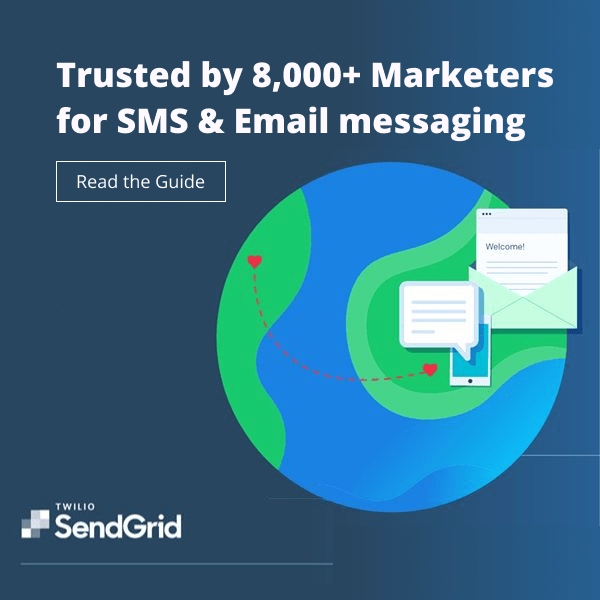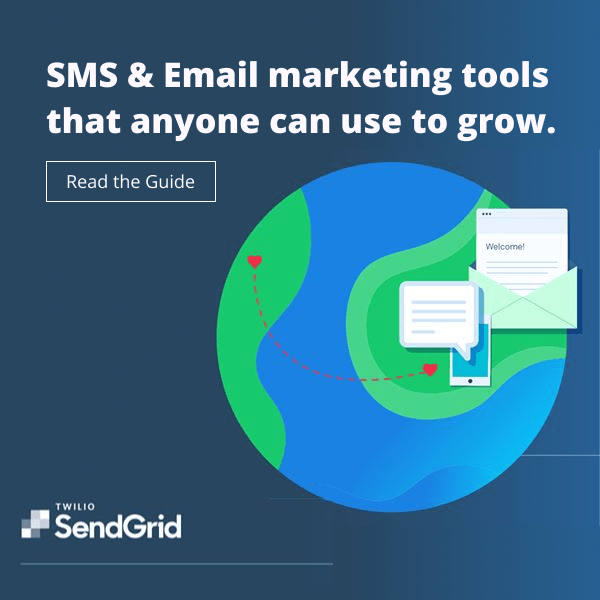Whether you’re fixing a broken funnel or just trying to improve a marketing campaign, it’s important that you have tools to think about your core value prop and find different ways to present it.
Fortunately, 2,400 years ago, Aristotle figured out common different ways to persuade people, so we don’t have to. He invented the classic mental model that they teach for mixing up your messaging: the modes of persuasion.
If you’re a marketer who’s come into the profession without formal training in the field (like most marketers), you may have never learned about them. Modes of persuasion date back thousands of years—literally—and used to be taught to people learning rhetoric and philosophy in ancient Greece and Rome.
Most copywriters and teachers talk about the modes of persuasion in a very theoretical manner. Let’s tackle this with an actual ad example based off the last campaign I saw on Facebook.
Here’s a retargeting ad sent my way by SendGrid. Simple enough, but I already don’t like it because I need to read the supporting ad text before this even makes sense.

There are 7 common persuasive devices you can use in writing copy / positioning your messaging. Let’s change nothing at all in the ad other than the copy and see what results.
Persuasive Device 1: Appeal to emotion

In this case, appealing to a sense of community and connection feels like it would help reinforce the idea of SendGrid as a tool for communication. Other emotions we could try to evoke would be relief (“the easy to use email tool”), power (“send to millions of email addresses and phone numbers in just one click”), or safety, (“500 million email addresses in SendGrid and 0 successful hacking attempts”).
Persuasive Device 2: Appeal to reason

This is an over-used persuasive technique in my opinion. Most any campaign that hinges on price or features is arguing that logically, this is the right tool to use because look at how the benefits outweigh the costs.
Arguing logically appeals to a certain mindset, but there are plenty of more effective ways to persuade, especially if your goal isn’t a purchase right out of the gate.
Persuasive Device 3: Appeal to trust

9 out of 10 doctors recommend Crest Toothpaste, right? That kind of trust signaling lets people who don’t understand a complex topic place their faith in a professional’s opinion to make up their mind for them.
Trust signals are immensely high quality if they come from someone that your lead already knows. This can be user generated content where a lead’s actual friend or acquaintance sends the trust signal, or it can be something which comes from a very well known person in the space. If Elon Musk or Jeff Bezos say something good about a company or product, you better believe that’s a huge trust signal.
Persuasive Device 4: Appeal to popularity

8,000 other marketers can’t be wrong, right? Come and join us on the bandwagon!
For a certain kind of mindset, especially on less expensive sales, quantity of data brings a quality of its own. I confess when I’m buying socks or razor blades on Amazon, I look at the average rating and if they have a few hundred reviews. 800 happy sock buyers? Yeah, that’s probably good enough for me.
Persuasive Device #5: Appeal to ubiquity

Similar to bandwagon marketing (from above), this persuasive device makes it evident that your product is something that helps solve a problem for the average person. If SendGrid was a great technical tool, but one that required you use the command line in order to be able to control the tool, it would hardly be something that would achieve ubiquity.
Persuasive Device #6: Appeal to consistency (repetition)



Our brains work in weird ways. If you hear something 10 times, you are more likely to believe in it than if you hear it just once. If you remember those terrible old Head OnAppeal via repetition is extremely common in spoken persuasion, but it can also work well in performance marketing if you have the budget to saturate your audience with a consistent message over time.
Persuasive device #7: Appeal to responsiveness

Do you remember back when grass was green and apples sweet? Pepperidge Farm remembers.
Asking a question that your reader has to answer in his or her head is risky sometimes (the answer can often be “no”), but if you’ve got a compelling question that you know your reader is going to react to correctly, this can start a dialog where the expected next step is, “…and come give me your email address.” Make sure that your question directly addresses a major pain for your key persona.
How would you frame your value prop with each of these?
This actually started as a Twitter thread I wrote today, so feel free to follow up there or just tag me @trevorlongino. 🙂



